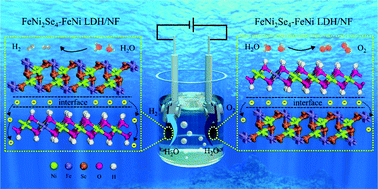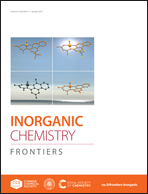In situ construction of FeNi2Se4-FeNi LDH heterointerfaces with electron redistribution for enhanced overall water splitting†
Abstract
Developing hierarchical heterostructures as bifunctional electrocatalysts which promote renewable hydrogen production is a desirable but challenging technology in electrochemical water splitting. Herein, the interface engineering of the FeNi2Se4-FeNi LDH composite is achieved by the in situ growth of FeNi LDH nanosheets and the subsequent partial selenization treatment. Enhanced mass transfer and accelerated gas release are achieved in such a unique self-supported hierarchical heterostructure during overall water splitting. Moreover, the strong electronic interaction between FeNi2Se4 and FeNi LDH optimizes the electron redistribution of Fe and Ni sites, which significantly improves the interfacial reactivity of reactants and/or intermediates with the hybrid catalyst. Benefiting from increased active sites and enhanced intrinsic activity, the hybrid electrocatalyst requires only a potential of 205 mV for the oxygen evolution reaction (OER) and a potential of 106 mV for the hydrogen evolution reaction (HER) to realize 10 mA cm−2. Specifically, the optimized FeNi2Se4-FeNi LDH as a bifunctional electrode in overall water splitting delivers 10 mA cm−2 at a low cell voltage of 1.56 V driven by a solar cell. This strategy by rational design of heterostructures thus paves an efficient pathway to fabricate active and non-precious bifunctional electrocatalysts for overall water splitting.



 Please wait while we load your content...
Please wait while we load your content...